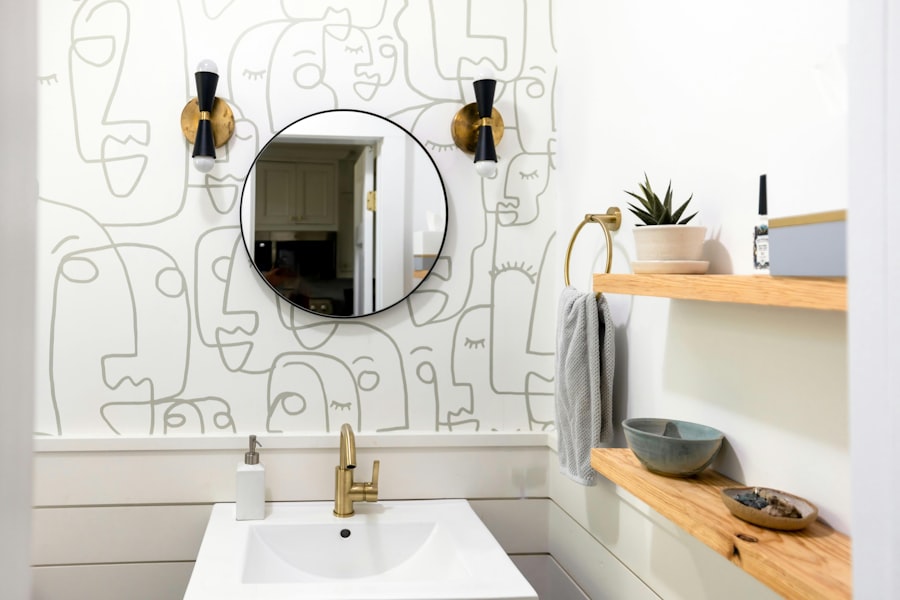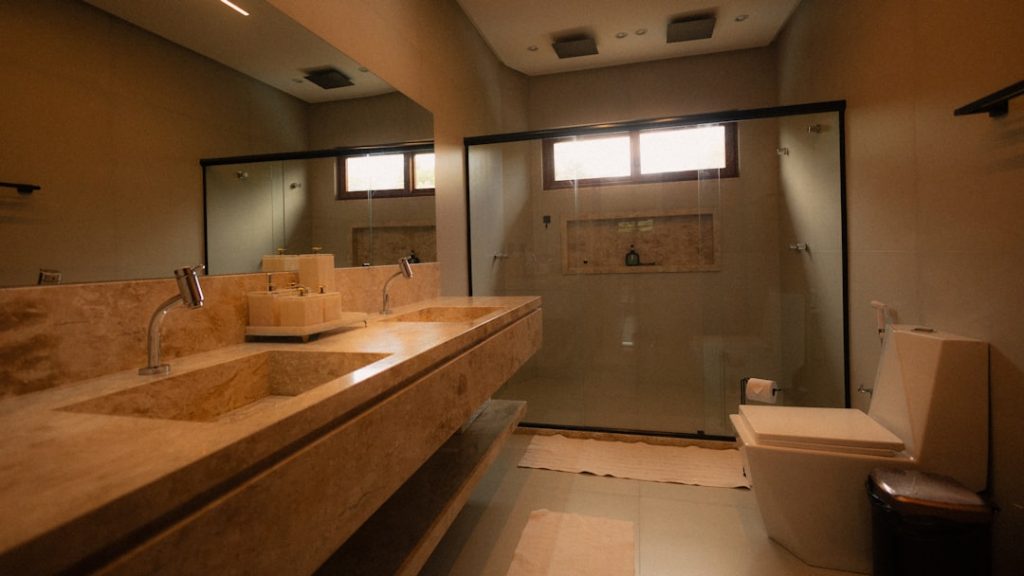Selecting the right contractor is a pivotal step in any home renovation project, particularly when it comes to a bathroom remodel. The contractor you choose will not only influence the quality of the work but also the overall experience of the renovation process. Start by gathering recommendations from friends, family, or neighbors who have recently undertaken similar projects.
Online platforms such as Yelp, Angie’s List, or Houzz can also provide valuable insights through customer reviews and ratings. Once you have a shortlist, it’s essential to conduct interviews with potential contractors. Ask about their experience with bathroom renovations, request references, and inquire about their licensing and insurance status.
A reputable contractor should be transparent about their qualifications and willing to provide proof of insurance and bonding. After narrowing down your options, it’s wise to obtain multiple quotes. This not only gives you a sense of the market rate for your project but also allows you to gauge the contractors’ communication styles and professionalism.
Pay attention to how detailed their proposals are; a comprehensive quote should outline labor costs, material expenses, and a timeline for completion. Additionally, don’t hesitate to ask about their approach to project management and how they handle unexpected issues that may arise during the renovation. A good contractor will have a clear plan for communication and will keep you informed throughout the process, ensuring that your vision is realized while adhering to timelines and budgets.
Key Takeaways
- Finding the right contractor is crucial for a successful bathroom renovation project. Look for experience, references, and a good rapport.
- Setting a budget is essential to avoid overspending. Consider all costs including labor, materials, and unexpected expenses.
- Designing your dream bathroom involves careful planning and consideration of your personal style and needs. Think about layout, fixtures, and storage options.
- Choosing the right materials is important for durability and aesthetics. Consider factors like moisture resistance, maintenance, and cost.
- Maximizing space is key in a small bathroom. Look for clever storage solutions and consider a layout that makes the most of the available space.
- Adding luxurious features can elevate the look and feel of your bathroom. Consider options like heated floors, a spa-like shower, or a statement bathtub.
- Incorporating energy-efficient fixtures is not only environmentally friendly but can also save you money in the long run. Look for options like low-flow toilets and LED lighting.
- Adding personal touches can make your bathroom feel like a true reflection of your style. Consider adding artwork, plants, or unique accessories to make the space your own.
Setting a Budget
Establishing a budget is one of the most critical aspects of planning a bathroom remodel. It serves as a financial blueprint that guides every decision you make throughout the renovation process. Begin by determining how much you can realistically afford to spend without compromising your financial stability.
Consider all potential costs, including labor, materials, permits, and any unexpected expenses that may arise. A common rule of thumb is to allocate about 20% of your home’s value for a bathroom remodel; however, this can vary based on your specific circumstances and goals. Once you have a rough estimate of your total budget, break it down into categories such as fixtures, cabinetry, flooring, and labor.
This detailed approach allows you to see where your money is going and helps identify areas where you might be able to cut costs if necessary. For instance, if high-end tiles are outside your budget, consider alternatives like vinyl or laminate that mimic the look of more expensive materials without the hefty price tag. Additionally, it’s prudent to set aside a contingency fund—typically around 10-15% of your total budget—to cover unforeseen expenses that may arise during the renovation process.
This financial cushion can alleviate stress and ensure that your project stays on track even when surprises occur.
Designing Your Dream Bathroom

Designing your dream bathroom is an exciting yet challenging endeavor that requires careful consideration of both aesthetics and functionality. Start by envisioning how you want the space to feel. Do you prefer a modern minimalist look with clean lines and neutral colors, or are you drawn to a more traditional style with ornate details?
Creating a mood board can be an effective way to visualize your ideas. Collect images from magazines, websites, or social media platforms like Pinterest that resonate with your vision. This visual representation will serve as a guide throughout the design process and help communicate your ideas to your contractor.
In addition to aesthetics, consider the layout of your bathroom carefully. The arrangement of fixtures such as the sink, toilet, and shower can significantly impact both usability and comfort. If space allows, think about incorporating features like a double vanity or a separate soaking tub for added luxury.
However, if you’re working with a smaller area, focus on maximizing efficiency by selecting compact fixtures and smart storage solutions. It’s also essential to think about lighting; natural light can make a small bathroom feel larger, while layered lighting—such as ambient, task, and accent lighting—can enhance functionality and create an inviting atmosphere.
Choosing the Right Materials
| Material | Strength | Cost | Weight |
|---|---|---|---|
| Steel | High | Medium | Heavy |
| Aluminum | Medium | High | Light |
| Plastic | Low | Low | Light |
The materials you select for your bathroom remodel play a crucial role in both the aesthetic appeal and durability of the space. When choosing materials, consider factors such as moisture resistance, maintenance requirements, and overall style compatibility. For instance, ceramic or porcelain tiles are popular choices for flooring and walls due to their water resistance and variety of designs.
If you’re looking for something more luxurious, natural stone like marble or granite can add elegance but may require more maintenance to keep them looking pristine. In addition to tiles, consider the materials for countertops and cabinetry. Quartz countertops are gaining popularity due to their durability and low maintenance needs compared to natural stone options.
When it comes to cabinetry, solid wood offers timeless appeal but can be susceptible to moisture damage if not properly sealed. Alternatively, plywood or MDF (medium-density fiberboard) can provide a cost-effective solution while still offering a range of finishes that mimic wood grain. Ultimately, the right materials should align with your design vision while also standing up to the unique challenges posed by a bathroom environment.
Maximizing Space
Maximizing space in a bathroom is essential, especially in smaller homes where every square foot counts. One effective strategy is to utilize vertical space by installing shelves or cabinets that reach up to the ceiling. This not only provides additional storage but also draws the eye upward, creating an illusion of height in the room.
Floating vanities are another popular choice for small bathrooms; they free up floor space and make the area feel more open while providing essential storage. Another way to maximize space is through smart fixture selection. Opt for compact toilets and sinks designed specifically for smaller bathrooms; these fixtures often have a sleek profile without sacrificing functionality.
Additionally, consider using glass shower enclosures instead of bulky shower curtains or walls; this can create a more open feel while allowing light to flow freely throughout the space. Mirrors also play a significant role in making a bathroom appear larger; strategically placing mirrors can reflect light and create depth, enhancing the overall ambiance of the room.
Adding Luxurious Features

Incorporating luxurious features into your bathroom remodel can elevate the space from functional to indulgent. One popular option is installing a spa-like soaking tub or a freestanding tub that serves as a stunning focal point in the room. These tubs not only provide a relaxing retreat but also add an element of sophistication to your design.
If space permits, consider adding features like heated floors or towel warmers for an extra touch of comfort during colder months. Another luxurious addition could be a rainfall showerhead or multi-jet shower system that transforms an ordinary shower into an invigorating experience. Smart technology is also making its way into bathrooms; consider installing smart mirrors with built-in lighting and defogging capabilities or voice-activated controls for lighting and temperature settings.
These features not only enhance convenience but also contribute to an overall sense of luxury that can make daily routines feel more enjoyable.
Incorporating Energy-Efficient Fixtures
In today’s environmentally conscious world, incorporating energy-efficient fixtures into your bathroom remodel is not only beneficial for the planet but can also lead to significant cost savings over time. Start by selecting low-flow toilets that use less water per flush without sacrificing performance; many modern designs are highly efficient and come in various styles to suit your aesthetic preferences. Similarly, low-flow faucets and showerheads can reduce water consumption while still providing adequate pressure.
Lighting is another area where energy efficiency can make a difference. Opt for LED bulbs instead of traditional incandescent lights; LEDs consume significantly less energy and have a longer lifespan, making them a more sustainable choice for your bathroom lighting needs. Additionally, consider installing motion sensors or dimmer switches that allow you to control lighting levels based on usage patterns—this not only enhances convenience but also contributes to energy savings over time.
Adding Personal Touches
Personalizing your bathroom is what truly transforms it into your own sanctuary—a space that reflects your style and meets your needs. Start by selecting accessories that resonate with your personality; this could include unique artwork, decorative towels, or stylish storage solutions that add character while remaining functional. Incorporating plants can also breathe life into the space; choose moisture-loving varieties like ferns or peace lilies that thrive in humid environments.
Another way to add personal touches is through color choices and finishes. Whether you prefer bold hues or soft pastels, selecting paint colors or tile patterns that resonate with you can create an inviting atmosphere tailored to your taste. Don’t shy away from mixing textures—combining matte finishes with glossy surfaces can create visual interest while maintaining cohesion in design.
Ultimately, these personal touches will not only enhance the aesthetic appeal of your bathroom but also make it a place where you feel comfortable and at ease every day.



